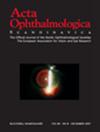Development of resources for training machine learning systems for the eye
Abstract
Regulation of distinct molecular pathways in coordinately developing tissues drives eye development. This process involves factors in signaling, transcription, translation and post-transcriptional control that together determine the proteome of individual cells. Characterizing these regulatory events and their relationships with each other in distinct ocular tissues will lead to the derivation of gene regulatory networks (GRNs) for eye development, which in turn will allow building of the “developmental oculome” (Lachke, Maas (2010) Wiley Interdiscip Rev Syst Biol Med 2(3):305-323 doi: 10.1002/wsbm.59). Toward this goal, we generated and analyzed various omics datasets on developing eye tissues, performed functional characterization of key molecules, and developed a web resource called iSyTE (Anand, Lachke (2017) Exp Eye Res 156:22-33 PMC5026553; Kakrana et al (2018) Nucleic Acids Res 46(D1): D875-D885 doi: 10.1093/nar/gkx837; Lachke (2022) Exp Eye Res 214:108889 PMC8792301). To extract further insights from these omics data, it is necessary to analyze them in the context of experimentally verified data on the eye. These data can be used for training machine learning systems to develop models for eye development. The data used for training represents a an important factor in machine learning systems, i.e. the quality of these data is a key contributor that determines the robustness of the resulting models. There is a wealth of molecular functional (i.e. experimental evidence-based) data on the eye that has been generated by researchers worldwide over the past several decades. These individual regulatory data “nodes” (regulators and targets) – currently “static” in the literature with limited connectivity – hold rich potential to define detailed, and importantly, experimentally validated GRNs that can be used for training machine learning systems. As proof of principle, we have focused on ocular lens development and curated mechanistic data from individual gene perturbation evidences in the mouse from >100 original research articles. This has led to definition of thousands of experimentally validated relationships (edges) between key factors and their targets (nodes) in lens development. These resources serve as strong foundational data for training machine learning systems and represent the essential first step toward advancing our understanding of the natural computing governing eye development, and how its perturbation results in ocular developmental disorders.

 求助内容:
求助内容: 应助结果提醒方式:
应助结果提醒方式:


